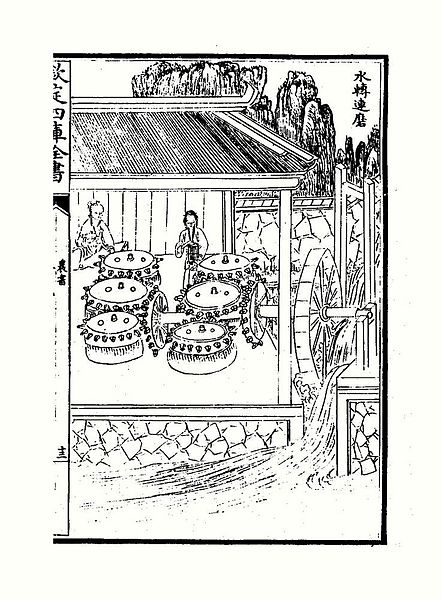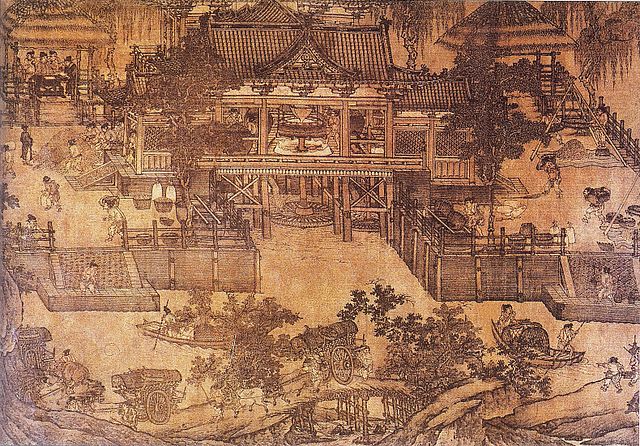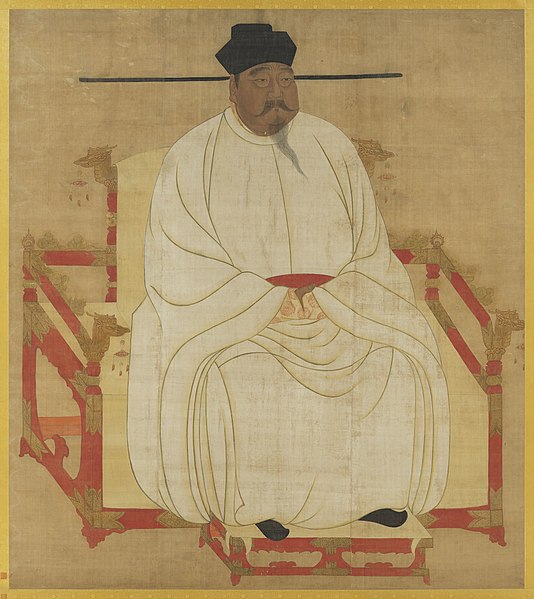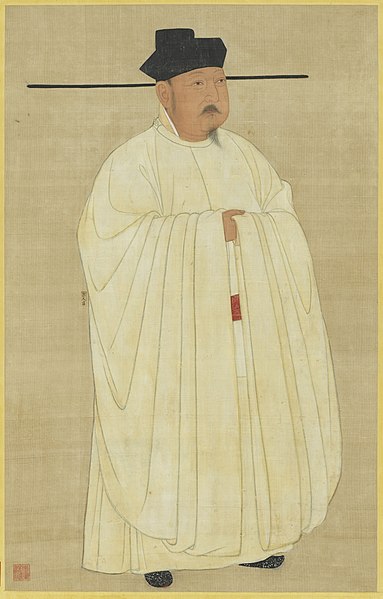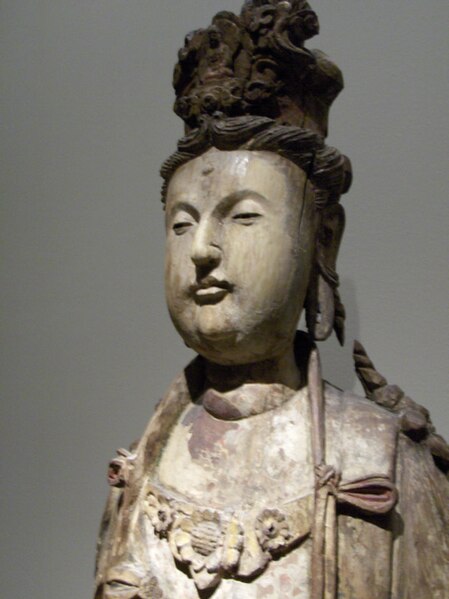Economy of the Song dynasty
The economy of the Song dynasty (960–1279) has been characterized as the most prosperous in the world at the time. The dynasty moved away from the top-down command economy of the Tang dynasty (618–907) and made extensive use of market mechanisms as national income grew to be around three times that of 12th century Europe. The dynasty was beset by invasions and border pressure, lost control of North China in 1127, and fell in 1279. Yet the period saw the growth of cities, regional specialization, and a national market. There was sustained growth in population and per capita income, structural change in the economy, and increased technological innovation such as movable print, improved seeds for rice and other commercial crops, gunpowder, water-powered mechanical clocks, the use of coal as an industrial fuel, improved iron and steel production, and more efficient canal locks. China had a steel production of around 100,000 tons plus urban cities with millions of people at the time.
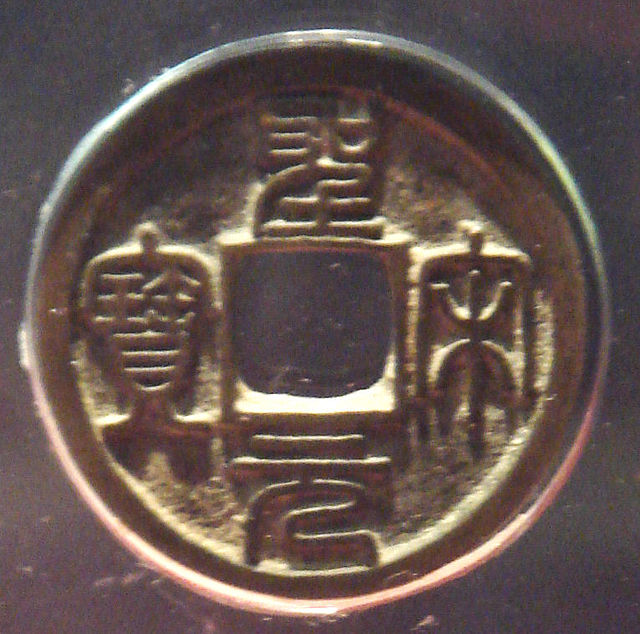
A Northern Song coin (sheng song yuan bao 聖宋元寶)
A water-powered grain mill from the Nong shu by Wang Zhen, Yuan dynasty
A Northern Song (960–1127) era painting of a water-powered mill for grain, along with river transport.
Song silk production facility
The Song dynasty was an imperial dynasty of China that ruled from 960 to 1279. The dynasty was founded by Emperor Taizu of Song, who usurped the throne of the Later Zhou dynasty and went on to conquer the rest of the Ten Kingdoms, ending the Five Dynasties and Ten Kingdoms period. The Song often came into conflict with the contemporaneous Liao, Western Xia and Jin dynasties in northern China. After retreating to southern China following attacks by the Jin dynasty, the Song was eventually conquered by the Mongol-led Yuan dynasty.
Emperor Taizu of Song (r. 960–976), a court portrait painting
A portrait of Emperor Taizong of Song (r. 976–997)
A wooden Bodhisattva from the Song dynasty (960–1279)
Flock of Crane over Song Palace painting by Emperor Huizong


